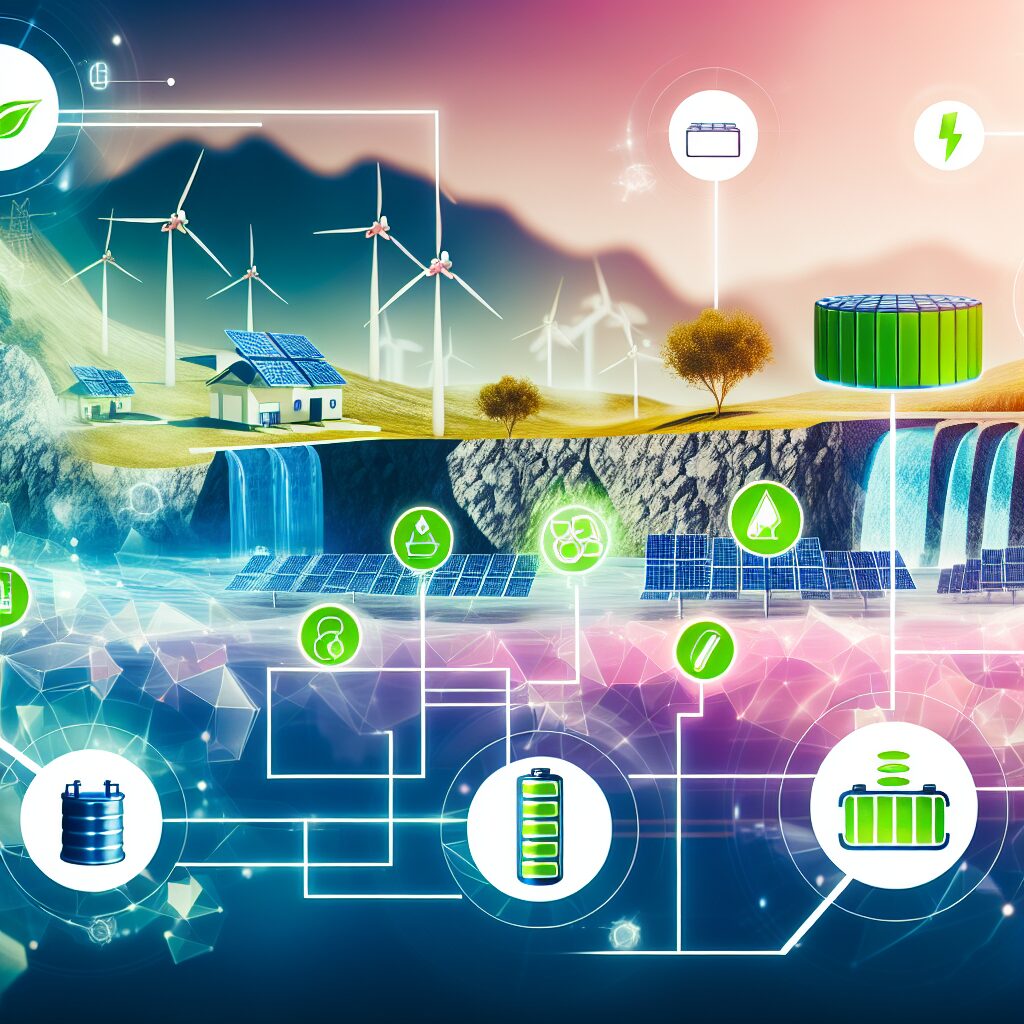The Ultimate Guide to Clean Energy Storage Solutions
Clean energy storage is revolutionizing the way we think about power. As the world increasingly turns to renewable energy sources like solar and wind, the need for efficient and reliable storage solutions becomes paramount. This guide will explore the various types of clean energy storage, their benefits, and their impact on the future of energy consumption.
Understanding Clean Energy Storage
Clean energy storage refers to technologies that store energy generated from renewable sources for later use. These systems play a crucial role in balancing supply and demand, ensuring that energy is available when needed, even when the sun isn’t shining or the wind isn’t blowing. By storing excess energy, these systems help reduce reliance on fossil fuels and contribute to a more sustainable energy grid.
Types of Clean Energy Storage Solutions
Batteries
Batteries are perhaps the most well-known form of energy storage. Lithium-ion batteries, in particular, are widely used due to their high energy density, efficiency, and declining costs. They are commonly found in electric vehicles, home energy storage systems, and grid-scale applications.
Pumped Hydro Storage
Pumped hydro storage is one of the oldest and most established forms of energy storage. This method involves pumping water to a higher elevation during periods of low energy demand and then releasing it to generate electricity when demand is high. It offers a large storage capacity and long discharge durations, making it ideal for stabilizing the grid.
Thermal Energy Storage
Thermal energy storage systems store energy in the form of heat or cold. One common method is using molten salt to store heat generated by solar power plants. This stored heat can then be used to produce electricity when the sun isn’t shining. Thermal storage can also be used for heating and cooling buildings, contributing to overall energy efficiency.
Compressed Air Energy Storage (CAES)
CAES systems store energy by compressing air and storing it in underground caverns or tanks. When electricity is needed, the compressed air is released, driving turbines to generate power. This technology can provide large-scale storage and is particularly useful for balancing intermittent renewable energy sources.
Flywheels
Flywheel energy storage systems store energy in the form of rotational kinetic energy. A flywheel spins at high speeds to store energy and then slows down to release it. These systems offer rapid response times and high efficiency, making them suitable for grid stabilization and frequency regulation.
Benefits of Clean Energy Storage
Grid Stability
One of the primary benefits of clean energy storage is its ability to stabilize the grid. By storing excess energy during periods of low demand and releasing it during peak times, storage systems help maintain a consistent and reliable power supply.
Integration of Renewable Energy
Clean energy storage facilitates the integration of renewable energy sources into the grid. By storing energy generated from solar and wind, these systems ensure that renewable power is available even when the weather conditions are not favorable.
Reduced Reliance on Fossil Fuels
Energy storage reduces the need for fossil fuel-based power plants to meet peak demand. This not only decreases greenhouse gas emissions but also minimizes the environmental impact of energy production.
Cost Savings
Energy storage can lead to cost savings for both consumers and utilities. By reducing the need for expensive peak power generation and improving grid efficiency, storage systems can lower electricity costs.
Challenges and Future Outlook
While clean energy storage offers numerous benefits, there are still challenges to overcome. The high initial costs of some storage technologies can be a barrier to widespread adoption. However, ongoing research and development are driving down costs and improving performance.
Policy and regulatory support are also crucial for the growth of energy storage solutions. Governments and utilities must work together to create favorable conditions for the deployment of storage technologies.
Looking ahead, the future of clean energy storage is bright. Advances in technology, combined with increasing investment and supportive policies, are set to drive significant growth in the sector. As storage solutions become more efficient and affordable, they will play a pivotal role in the transition to a sustainable energy future.
Conclusion
Clean energy storage is a key component of the renewable energy landscape. By providing reliable and efficient storage solutions, these technologies enable the integration of renewable energy sources, reduce reliance on fossil fuels, and contribute to a stable and sustainable energy grid. As the world continues to prioritize clean energy, the importance of energy storage will only grow, shaping the future of power generation and consumption.
Source

